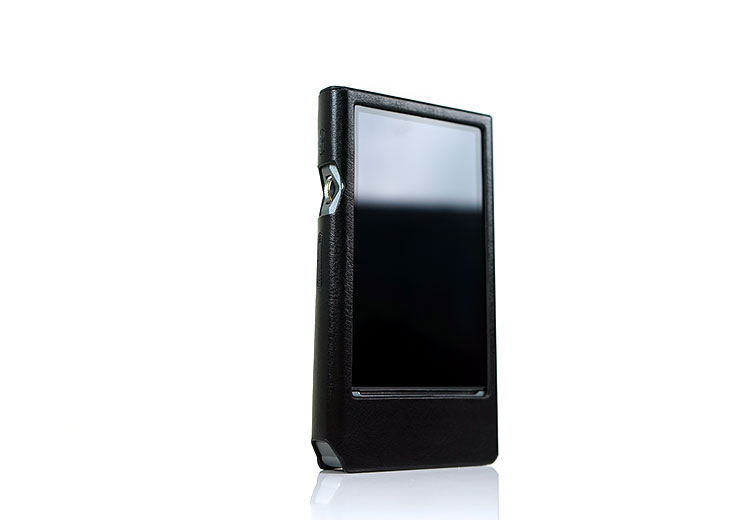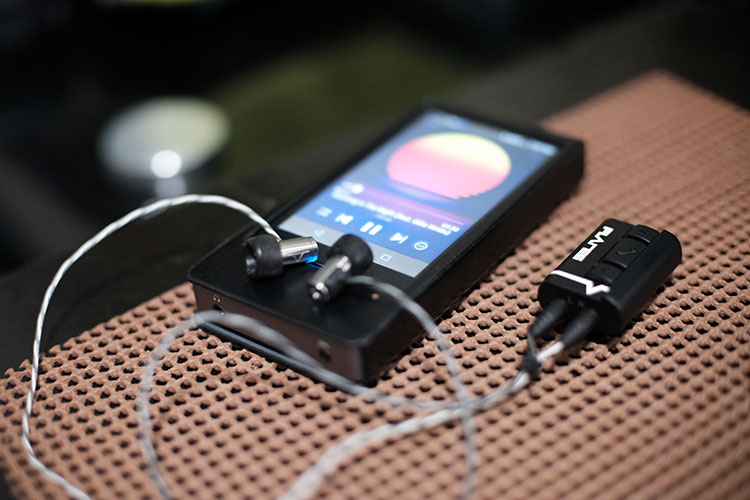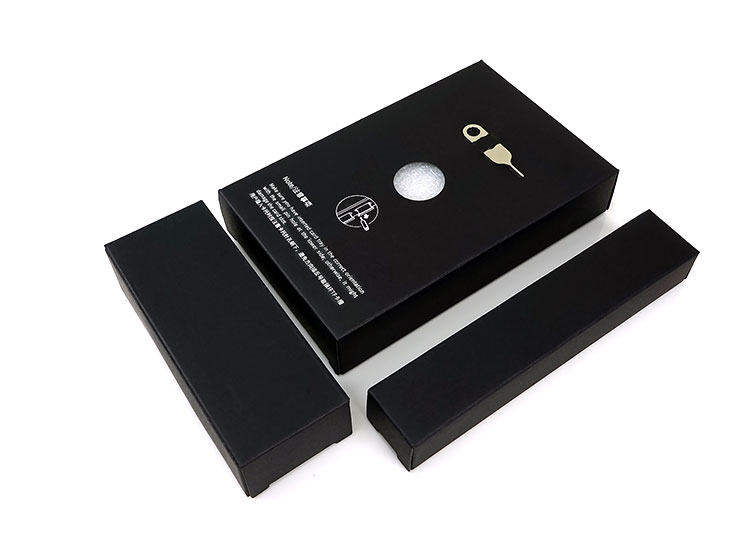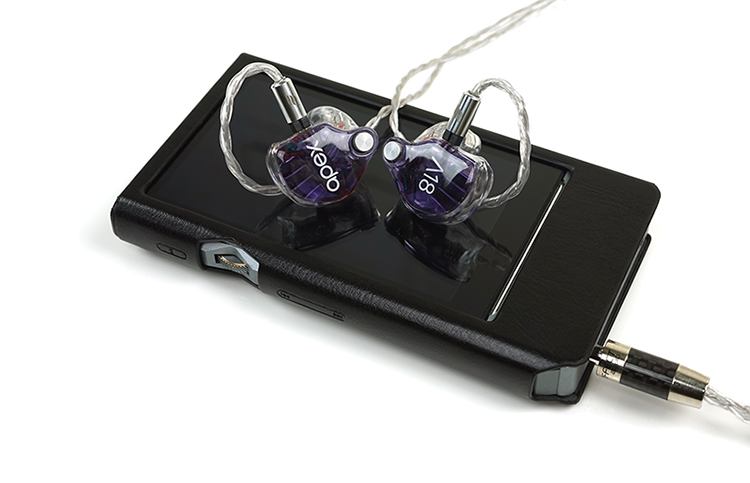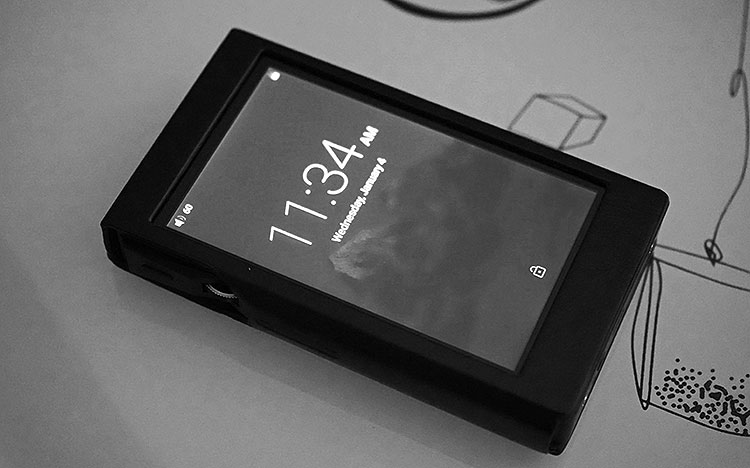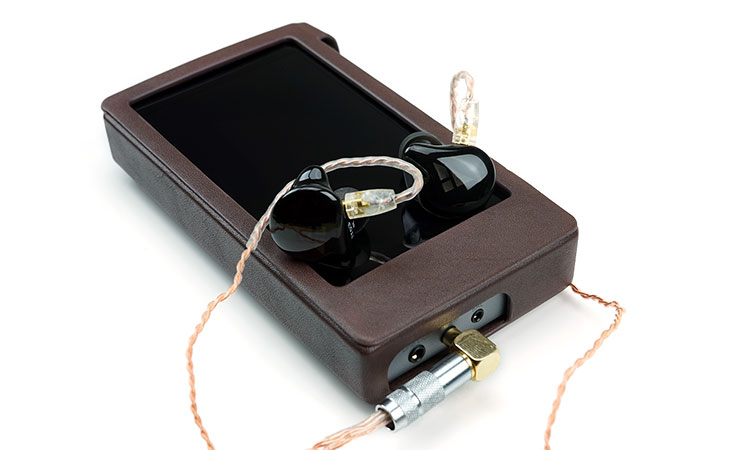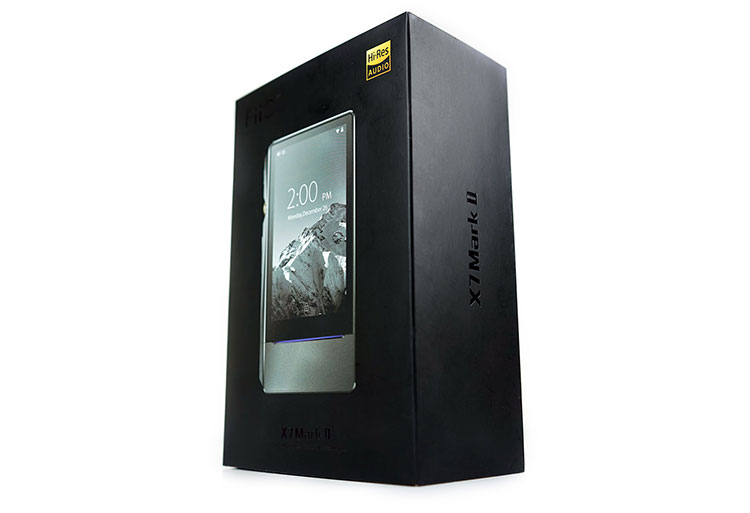Sound Impressions
Summary
FiiO’s implementation of the AM3a combined with the ES9028PRO is more neutral and refined sounding than the ES9018/AM3 combination. I also find it more linear and coherent sounding than the X7/AM3 combination which tended to warm things up a little, particularly in the lower mids.
The AM3a card does a remarkably good job painting a very low noise level with only the faintest of hiss on super-efficient IEMs such as the Andromeda. In comparison, the AM3 is much noisier with a palatable level of background hiss using similar IEMs.
Those of you retaining the AM1 as the most efficient of amp cards with the least amount of noise now have an alternative that not only clamps down on the higher noise floors of the AM2, 3, and 5 but also introduces a markedly more engaging tonality as well as a balanced output should it be required.
Bass
With the AM3 you can detect just a tiny bit of mid-bass bloom whereas the AM3a is more linear and cleaner sounding in its mid-bass performance.
You might perceive the AM3 to have a slightly fuller sound but it is not as dynamic or snappy sounding with the X7 Mark II presenting more separation and textured detail, particularly in its sub to mid-bass response which you tend to miss slightly with the AM3/X7 combo.
Mids
I love the vocal performance on the AM3a which benefits from the more neutral timbre of the AM3a and the better instrumental positioning and separation this amp card can deliver.
On the AM3 lower mids are a bit thicker and smoother pushing the vocals back a bit more compared to the AM3a which takes a more linear and clearer approach and provides more space for vocals to breathe and shine.
They also sound a bit more refined, less prone to sibilance, and generally more capable of delivering a more accurate portrayal of vocal embouchure techniques. The AM3 tends to deliver a smooth response but vocal characteristics and mouthing formations are not as nuanced.
Treble
The upper mids and treble on the X7 Mark II/AM3a are cleaner with a bit more sparkle. It has a lighter airier timbre and better dynamics than the X7/AM3 which sounds a little thicker but not as detailed or as articulate.
Percussive passages are more vivid and energetic sounding, perhaps a little more forward but completely avoid that Sabre glare of the older ESS chip series implementations. There is nothing harsh about the AM3a/X7 Mark II’s treble performance.
Staging
Staging-wise the X7 Mark II combined with the AM3a provides better detail and dynamics at the very low end and superior air and articulation in its brilliance region. The linear response curve in the midbass to lower mids also provides a bit more space and clarity to instrumental passages.
With the additional clarity and control, you can pick up much more nuanced detail in the X7 Mark II’s mid-range imaging far quicker than the original X7 combined with the AM3 card combo.
Synergy
Efficiency
FiiO has dropped the output power of the AM3a in comparison to the AM3 by around 50mW on both single-ended and balanced output.
On a 16 ohm/1kHz load, it now outputs at 200mW instead of 250mW which is the same power rating as the AM1. It does, however, perform significantly better on higher loads than the AM1 with a 150 mW at 32Ω rating compared to 100 mW at 32Ω and 17 mW at 300Ω compared to the AM1’s weaker 10 mW at 300Ω.
What this means is the AM3a is a more flexible amp card for a wider range of IEMs and headphones than the AM1. It will provide similar very low noise levels, the one key feature of the AM1 that I rated highly but on the flip side higher-rated IEMs and more demanding headphones will sound more dynamic and optimal than the AM1’s weaker output is capable of.
Power
It will not give you the same levels of power as the 300mW and 500mW AM2 and AM5 in single-ended mode though if you are using the AM3a balanced output you can achieve up to 400mW of output power which will give the AM3 a clear edge over the AM2.
I would still plump for the AM5 single-ended mode though for demanding headphones of 32 ohms and upwards. Both cards have a pleasing level of musicality and impact but on headphones such as the 36 ohm AKG K872, the AM5 drives this closed headphone with a bit more low-end gusto than the AM3a single-ended output.
Balanced
Distinct
Balanced performance on the AM3a is much more distinct and dynamic sounding than its single-ended output which is pleasing given the rather damp squib that was the X5iii balanced output in comparison to its unbalanced output.
Power
It is not as powerful as the DX200’s balanced, I believe 4Vrms compared to 6Vrms on the AMP 1 card, but it is a more powerful performer than the Opus#3 3Vrms balanced output. It is also much quieter than the AM3 balanced output exhibiting much less noise and background hiss.
Voltage
There is little volume adjustment to be done by swapping from balanced to single-ended output but you will notice the additional power that the AM3a balanced output has to offer (around 5 digital volume step difference in low gain).
It is my preferred output was possible simply due to the better dynamics and fuller sound compared to the more controlled sound of the single-ended output. IEMs such as the Fidue A91 sound a whole lot more dynamic in balanced mode with the AM3a.
Wireless Performance
Enhancements
FiiO has gone to town on pitching the dual-mode BT capabilities of the new Mark II. In particular its apt-X capability out of the box combined with the superior EMI performance from the improved internal PCB shielding.
Pairing
Pairing with BT headphones and earphones was quick painless and also informative. Both cheap (Advanced Evo X) and expensive (Flares Pro) showed up quickly and paired without any issues.
Just in case you are not sure if your pairing is apt-X or not FiiO has rather handily inserted a sky-blue pop-up alert that you are connected to a Qualcomm apt-X compatible device which is a nice touch.
Performance
Performance-wise the X7 Mark II’s range was excellent and on par with my LG G6 as well as the DX200 with an approximate achieved range of 8-10m with one wall between the source device and me.
The Flares Pro retained a much more reliable connection than the Advanced Evo X but this is more to do with the Evo X wireless design than the X7 Mark II. It is prone to dropouts on a lot of BT sources with only smartphones getting the best out of them.
Tonally with TOTL BT IEMs such as the Flare Pro, the X7 Mark II was on par with the DX200 with excellent detail, a clean black background, and little in the way of additional coloration on the Flares Pro’s own internal BT amp. That means you get a slight uptick in low-end physicality and presence as well as a nice sparkling top-end contrast.
Digital Out
With the inclusion of an optical digital out you now have a choice between coaxial and optical and USB digital output for the X7 Mark II. Note you will need to use a 3.5mm mini Toslink termination or adapter for optical and the coaxial adapter supplied by FiiO if your coaxial cable is standard.
The X7 Mark II will not automatically detect which connection you are using but if you drop down the notifications bar and click where you see the line out option you can scroll through the digital alternatives until you get the right connection. The icon for optical (Fiber) or coaxial will show in the notification bar during playback.
Chord Mojo
Connected to the Mojo there is a palatable difference in the optical and USB OTG connection performance with the X7 Mark II. The optical out sounds more dynamic than the USB OTG which tends to come across as a little flatter and less natural sounding.
RHA L1
Optical works beautifully with the RHA L1 which is just as well as the Mark II USB OTG would not work with the L1 despite the original X7 having no such issues with its own OTG/L1 pairing. I can only presume a firmware update is required either with RHA or FiiO.
Analog Out
Line Out
If you study the specs of both the original X7 and the X7 Mark II you may happen to notice that the Mark II line out now has a bump in output voltage from 1.4 Vrms to 1.8Vrms as well as superior SNR of 119dB over 115dB and a better FR of 5 Hz~70 kHz(-3dBover the older X7’s 10 Hz~62 kHz(-3dB).
In short, the X7 Mark II line-out should sound cleaner and more dynamic when paired with portable or desktop amps.
RHA L1
Using the RHA L1 the numbers on paper correlated to my own listening experience. The X7 Mark I lineout is good, but the Mark II is slightly better. Combined with the superior line-out power and the more resolving and balanced ES9028PRO decoding the sound was more dynamic, detailed, and spacious sounding.
Volume matched at low gain 35 digital steps using the Fidue A91 the Mark II line out also sounded very slightly louder, not a night and day difference but side by side it was noticeable.
iFi Micro iDSD
Just to confirm line-out results we also used the iFi iDSD and we got pretty much the same differences in performance between both gens of the X7.
The X7 Mark II line out definitely has the advantage in dynamics and resolution over the older Mark I. Vocals are clearer and more detailed, the low end has more impact and the top end sounds more prominent and articulate.
Select Comparisons
FiiO X5 Mark 3
$399
Our full review here
Technical
Both the X5iii and X7 Mark II use a very open Android 5.1 though the X5iii has only 1 GB compared to the X7 Mark II’s 2GB so multitasking and general UX are superior. You will notice a slightly zippier feel to the operation of the X7 Mark II once the apps are loaded.
Both use apt-X and WiFi though the X7 Mark II’s better internal shielding and dual-band WiFi signal should provide less dropout and faster streaming speeds. The X7 Mark II also has superior onboard memory at 64GB compared to the X5iii’s still acceptable 32GB.
Performance
Performance-wise the AM3a amp card is not as powerful as the built-in X5iii amp. The X5iii is capable of 480mW on a 16-ohm load compared to the AM3a’s single-ended 200mW.
However, the X5iii’s balanced output was a disappointment with less power at just 26mW into 300 ohms compared to the more capable 63mW of the AM3a. The AM3a is clearly the more flexible amp than what the X5iii can offer.
The single-ended output on the X5iii is the better choice in terms of power for medium-efficiency headphones.
The AM3a unbalanced is the superior choice for IEMs and going balanced is the superior performer for high-impedance headphones though neither DAPs will power them adequately compared to a desktop. You will detect more hiss and a higher noise floor with IEMs on the X5iii than on the X7 Mark II with AM3a.
Sound
The X5iii has a fuller-sounding thicker low-end response compared to the X7 Mark II.
However, if you listen carefully I think the X7 Mark II with the AM3a has better snap, texture, and detail so it comes across as a little more dynamic in comparison to the softer more languid X5iii bass, particularly sub-bass which benefits from the more linear curve of the AM3a.
Vocals on the X7 Mark II/AM3a are more vivid and slightly further forward with more presence than the X5iii which trades it up for a thicker note and a smooth rounded delivery.
It doesn’t quite have the sparkle and energy of the X7 Mark II/AM3a particularly as you move through the upper mids and lower treble which is generally more resolving and articulate.
The instrumental timbre on the X7 Mark II/AM3a is generally more neutral and accurate compared to the richer more euphoric tones of the X5iii. The X5iii tends to sound a little softer in attack with slightly longer decay with an emphasis on general musicality compared to the more precise control and cleaner attack of the AM3A/X7 Mark II combination.
iBasso DX200
$869
Our full review: here
Platform
The DX200 goes one better with an Android 6.0 implementation using a dedicated Snapdragon graphics chip as well as 2GB onboard RAM. However, iBasso’s implementation of Android, open as it may be, does not include Google Play services out of the box.
For that, you have to manually install them and in my experience apps management and functionality on the DX200, with side loading at least, is a bit hit-and-miss. iBasso also does not include a whitelist of pre-approved apps so you are on your own a bit.
Technical
Being the bigger of the two DAPs the iBasso has the superior screen. The DX200 uses a capacitive 4.2″ IPS Screen (768*1280) built using liquid-based bonding technology or OCA whereas the Mark II’s smaller 3.7″ 400 x 800 IPS screen is much superior to the older X7 but falls short of the GUI performance of the DX200.
Like the Mark II, the DX200 has 64GB onboard memory but surprisingly just one memory card slot compared to the X7 Mark II’s dual slot.
Mango or Pure?
Mind you the size of the screen does present a few problems for the Mango OS which, for my money, is much weaker in terms of UX compared to the X7 Mark II Pure player. It is almost as if the Mango OS was blown up to fill the screen making scrolling a slight chore.
Pure Player is also the more accurate of the two in terms of tagging with better in-play options in more usable locations though both now offer similar digital filters since both use the same DAC chip, the ES9028PRO.
Performance
The DX200 single-ended output on the Amp 1 card is more powerful than the AM3a at 3Vrms or 230mW into a 32-ohm load compared to the X7 Mark II’s 150mW.
The balanced output of the DX200 though is the ace in the pack at 6Vrms or 1.1w on a 32-ohm load dwarfing the more modest AM3a at just 400mW or slightly less than half the power.
The AM3 or AM5 card will provide much more competitive numbers in terms of sheer power if that is your preference but I am very impressed by the DX200’s Amp 1 card range of power. Line out is also more powerful on the DX200
The AM3a though has less output power so will work very well with sensitive IEMs but exhibits marginally more background noise than the AMP 1 card on low gain settings. Of the two amp cards, the AMP 1 is the marginally quieter of the two.
Sound
Tonally both are very similar in basic presentation with an emphasis on presenting a fairly neutral and detailed response and as such, I find them both incredibly coherent and accurate sounding.
But there are some very slight differences between the two. The DX200 has generally a bit more body in the note with slightly more mid-bass weight and warmth than the X7 Mark II. The X7 Mark II though has a bit more sub-bass rumble and a more linear mid to upper-bass response.
The X7 Mark II’s treble signature has a bit more sparkle than the DX200 with a more forward lower treble providing more contrast and energy than the more natural and flowing sound of the DX200.
Vocals, in particular, show that subtle difference with the DX200 exhibiting a slightly softer and smoother attack compared to the sprightlier and more contrasting vocal timbre of the X7 Mark II/AM3a.
It is really a question of preference at this point, the additional top-end energy of the AM3a or the smoother tones fuller tones of the DX200 AMP 1 card.
Opus#3
$899
Our full review: here
Platform
The Opus#3 also uses Android 5.1 but it’s a tailored version and very restrictive in terms of app management. You can add some but it is more complex in terms of side loading, more so than the more open DX200.
The UX also is more fiddly than the Pure Player but slightly faster and more accurate in tagging than the DX200 Mango. The Opus#3 has no dual boot option, what you get is what you see and should be seen as more of a pure music player than an open media platform.
Technical
The Opus#3 is a little shorter and stubbier than the X7 Mark II, for some that might be easier in the hand.
The screen resolution is the same at 480 x 800 as well as being IPS and covered in tempered glass. Both screens perform equally well with good color saturation, lighting, and solid viewing angles.
Like the X7 Mark II, the Opus#3 also has 64Gb onboard memory but like the DX200 it only has one micro SD memory card slot whereas the X7 Mark II has two slots.
Performance
The Opus#3 is a very good performer for noise with little or no background hiss for efficient IEMs. It has less power at 2.5Vrms than the DX200 single-ended output and its balanced output is not quite as powerful as the AM3a though stronger than its single-ended output.
It can match the X7 Mark II for noise control but it is not quite as powerful or dynamic sounding from its balanced output for heavier loads.
Unfortunately, Opus#3 does not have a true line-out option even though you can select line-out in the menu.
Line out on the Opus#3 will go through the internal amp so you are in effect turning up the volume to its highest setting but still throwing out an amped signal meaning you are double amping if doing an analog IC to another amp.
Sound
The X7 Mark II/AM3a is more neutral in its tonality and more linear sounding across the board. Texture and detail have a slight edge, particularly in the mids where the Opus#3 has a slightly warmer fuller sound and a bit more of a mid-bass boost.
The sub-bass definition and impact on the X7 Mark II/AM3 are tighter and more dynamic sounding than the Opus#3 softer and more cautious approach.
The treble on the X7 Mark II is a bit brighter with more sparkle as well as being a little more articulate than the Opus#3 in the final octave. The instrumental timbre is a bit more neutral and accurate sounding than the more natural-sounding Opus#3.
Vocal positioning on both DAPs are similar but the X7 Mark II carries a little more detail and sounds the cleaner of the two. Overall, Opus#3 loses out a bit on detail to the X7 Mark II but it is the more forgiving of the two DAPs with a more subtle and smoother treble response.
Our Verdict
I did mention the X5iii as a benchmark of sorts for DAPs in 2017. It would seem FiiO agrees because the X7 Mark II takes everything good about the X5iii, mixes in, and improves on the amp system of the original X7 with the launch of the AM3a, producing a really great modern digital audio player.
Performance
The use of the ES9028PRO was a logical step from the older ES9018s. It fixes a great many things I was not too fussed on the older chip with a much better treble performance, tastier dynamics as well as a much-improved line out and optical out to better show off its technical prowess.
Whilst noise is not completely obliterated, IEM users should find the X7 Mark II and AM3a combo a much more potent player than before.
Physical & UI
The tweaks to harmonize the X7 Mark II physically are also very welcome. It is much easier in the hand now, the screen leaps out at you compared to the older duller X7 screen and the improved leather case stays where it should be from the get-go.
The UI tweaks, whilst largely aesthetic in improvements are cleaner and more organized, particularly in the playback screen. I am also glad FiiO resisted putting in any garden walls for the Android UX keeping it nice and open and performing with a little more zip with that 2GB onboard.
What’s not to like?
The USB OTG implementation could do with some further firmware revisions with the lack of functionality with some AMP/DACs such as the RHA L1 so I would warn you to try with your preferred amp/DAC before you buy.
It does work with the Mojo but some reports say it’s not 100% smooth. It had no issues on mine but this could be purely anecdotal, further testing may be required.
Apart from those caveats, I am mightily impressed with what I think is FiiO’s most mature release to date. The price point of $649.99 is a bit of a steal in that regard.
FiiO X7 Mark II Technical Specifications
Click here to go to the FiiO website to read up on the full specification listing.

